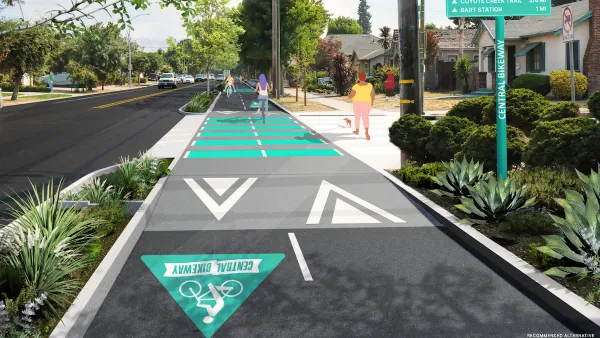Researchers in Europe are seeking ways to keep pedestrians safe in traffic accidents. One idea is an airbag that shoots out from under a raised 'bonnet' (the hood, in the States).
"The raised bonnet absorbs some of the energy of the impact, reducing the risk of serious injury to the pedestrian, says Hardy, whose project forms part of the European Union-funded Integrated Project on Advanced Protection Systems (APROSYS). "If it's a large pedestrian or on a small town car, the airbag also provides a cushioning effect around the stiff peripheral regions [of the windscreen]," he says.
The airbag system used by Hardy was developed by the German company Takata Petri. To test its efficacy when combined with the raised bonnet, they were incorporated into a prototype Fiat Stilo by engineers at the Fiat Research Centre in Turin, Italy. The team then assessed the severity of head injuries in collisions with a dummy pedestrian.
A standard Stilo hitting a pedestrian at 40 kilometres per hour, so that their heads struck the back of the bonnet, would have a score of around 1000 on the Head Impact Criterion (HIC) scale - corresponding to an 18 per cent chance of a life-threatening injury. For pedestrians hitting Hardy's bonnet, the scores were reduced to between 234 and 682, while the windscreen airbag scores ranged from 692 to 945.
FULL STORY: Transformers: Protecting pedestrians from killer cars

Planetizen Federal Action Tracker
A weekly monitor of how Trump’s orders and actions are impacting planners and planning in America.

Silicon Valley ‘Bike Superhighway’ Awarded $14M State Grant
A Caltrans grant brings the 10-mile Central Bikeway project connecting Santa Clara and East San Jose closer to fruition.

Amtrak Cutting Jobs, Funding to High-Speed Rail
The agency plans to cut 10 percent of its workforce and has confirmed it will not fund new high-speed rail projects.

Washington’s New Rent Cap Set Just Below 10% for 2026
Washington’s statewide cap on annual residential rent increases will be just shy of 10 percent next year, down slightly from its current level.

Nature Starts Here: The Essential Role of Nature Centers and Outdoor Programs
Nature centers and outdoor programs serve as vital gateways to environmental education, equity, and stewardship — bringing people closer to nature and inspiring the next generation to care for the planet.

Opinion: California Clean Transportation Efforts Not Addressing Needs of Low-Income Residents
The state’s rebate programs for e-bikes and other light electric vehicles are too underfunded to reach many of the Californians who need them most.
Urban Design for Planners 1: Software Tools
This six-course series explores essential urban design concepts using open source software and equips planners with the tools they need to participate fully in the urban design process.
Planning for Universal Design
Learn the tools for implementing Universal Design in planning regulations.
Caltrans
City of Fort Worth
New Jersey Institute of Technology
Mpact (founded as Rail~Volution)
City of Camden Redevelopment Agency
City of Portland
City of Laramie





























